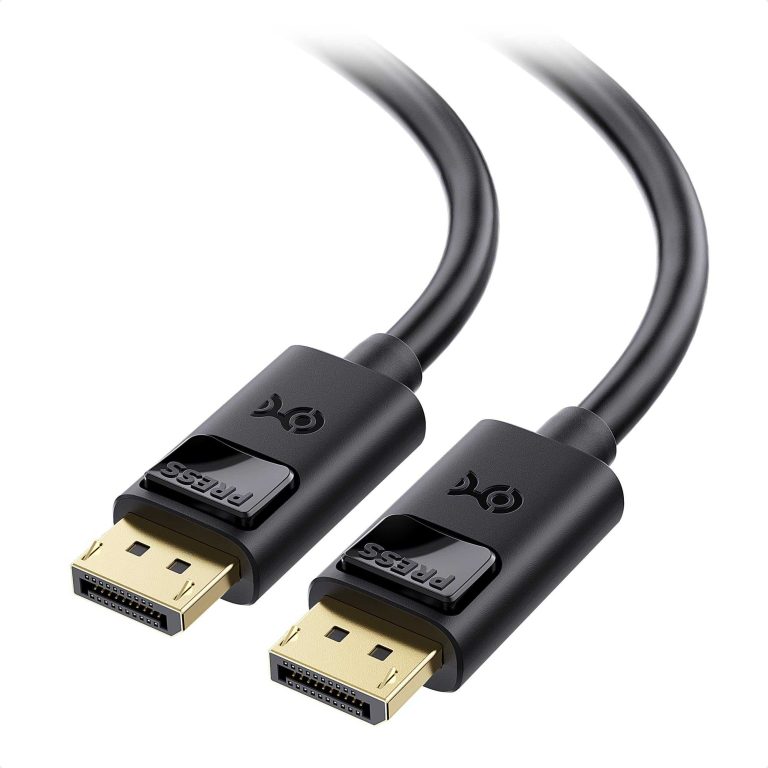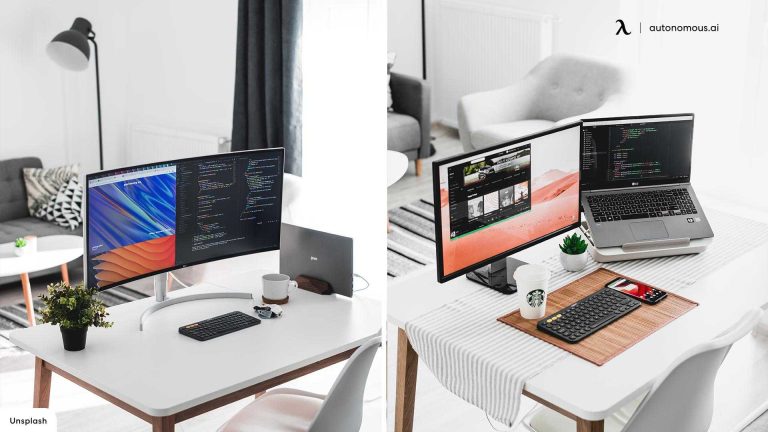Looking to elevate your gaming experience? The perfect monitor can make all the difference between a good game and an epic victory. To choose the best gaming monitor, focus on key features like refresh rate, response time, resolution, and panel type, which directly impact your gameplay.
In short, pick a monitor with a high refresh rate (at least 144Hz), low response time (1-3ms), and a resolution that suits your gaming setup. Consider the panel type based on whether you prioritize color accuracy or faster response. Ultimately, matching these specs to your gaming style and budget will ensure you find a monitor that delivers smooth visuals and immersive experiences.
When selecting the best gaming monitor, it’s essential to understand what makes a monitor stand out for gaming. Factors like refresh rates, response times, resolution, and panel technology play crucial roles in delivering seamless, clear visuals during fast-paced gameplay. Whether you’re into competitive eSports or immersive single-player adventures, choosing a monitor that matches your needs can dramatically improve your gaming performance and enjoyment. Given the multitude of options available today, knowing what features to prioritize can help you avoid costly mistakes and find a lasting gaming companion.
How Do I Choose the Best Monitor for Gaming?
Understanding Your Gaming Needs
Choosing the right gaming monitor begins with understanding what kind of gaming you enjoy. Are you playing fast-paced shooters, immersive RPGs, or casual puzzle games? Different games demand different monitor features for the best experience. For example, competitive gamers need quick response times, while story-driven players prioritize vivid colors and high resolution.
Key Features to Consider
When selecting a monitor, focus on these core features: refresh rate, response time, resolution, size, and panel type. Each impacts gameplay quality and how comfortable you are during long gaming sessions. Let’s look at each of these in detail.
Refresh Rate
The refresh rate indicates how many times per second the monitor updates the image. Higher refresh rates, such as 144Hz or 240Hz, provide smoother gameplay, especially for fast-moving scenes. For gamers involved in competitive sports or first-person shooters, a high refresh rate can make a significant difference.
Response Time
Response time refers to how quickly a pixel can change from one color to another. Lower response times, ideally 1ms to 3ms, reduce motion blur and ghosting effects. This is especially important for fast-paced games where quick reactions are required.
Resolution
Resolution determines how detailed your display is. Common options include Full HD (1920×1080), Quad HD (2560×1440), and 4K (3840×2160). Higher resolutions offer sharper images but demand more powerful graphics cards. Think about your PC’s capabilities and your desired visual quality.
Monitor Size
Monitor size affects immersion and comfort. Sizes between 24 and 32 inches are popular among gamers. Larger screens can enhance the gaming experience but may require a bigger desk and higher resolution to avoid pixelation.
Panel Type
The panel type influences color accuracy, viewing angles, and response times. The main types are TN, IPS, and VA.
- TN panels are known for very fast response times but have limited viewing angles and less vibrant colors.
- IPS panels offer excellent colors and wide viewing angles, making them ideal for immersive gaming and multimedia use, though response times are slightly slower.
- VA panels provide high contrast ratios and deep blacks, suitable for darker games and cinematic experiences.
Balancing Performance and Budget
It’s essential to find a monitor that offers good performance without exceeding your budget. High-end monitors with 240Hz refresh rates and 4K resolution can be expensive, but mid-range options still provide excellent gaming experiences.
Price Range Overview
- Under $200: Basic Full HD monitors with 75Hz to 144Hz refresh rates.
- $200 to $500: Mid-range monitors with 144Hz to 165Hz, better colors, and faster response times.
- Over $500: Premium models with 4K resolution, ultra-fast response times, and advanced features like G-Sync or FreeSync.
Adaptive Sync Technology
Adaptive sync technologies like NVIDIA G-Sync and AMD FreeSync reduce screen tearing and stuttering. These features synchronize the monitor’s refresh rate with your graphics card for smoother gameplay. Check if your GPU supports these technologies before choosing a monitor with one of these features.
Connectivity Options
Make sure the monitor has the right input ports for your setup. HDMI and DisplayPort are common for high-resolution or high-refresh-rate displays. Some monitors also include USB hubs or audio out ports for convenience.
Additional Features for Enhanced Gaming
Other features can improve your gaming experience:
- Curved Screens: Provide a more immersive experience by wrapping around your view.
- HDR Support: Offers better contrast and color range for more vivid images.
- Built-in Speakers: Useful but usually of lower quality than dedicated speakers.
- Adjustable Stand: Ensures comfort with tilt, swivel, and height adjustments.
Evaluating Build Quality and Design
A sturdy build and adjustable design help prevent fatigue during long gaming sessions. Look for monitors with slim bezels for a modern look and options for VESA mounting if you want to customize your setup.
Energy Efficiency and Durability
Opt for monitors with energy-saving features and good build quality. Check reviews for longevity and customer support. This ensures your investment will last through many gaming sessions.
Testing and Reading Reviews
Before purchasing, read reviews and watch video tests to see how different monitors perform in real-world gaming. Look for feedback on response times, color accuracy, and any issues like backlight bleed or ghosting.
Final Tips for Picking the Perfect Gaming Monitor
– Match the monitor’s refresh rate with your gaming needs. Fast-paced gamers should prioritize 144Hz or higher.
– Balance resolution and performance based on your computer’s graphics power.
– Consider the size that fits your desk and enhances your experience.
– Choose a panel type that aligns with your visual preferences.
– Ensure the monitor has the necessary connectivity options for your setup.
Having a clear understanding of these factors will make your choice easier and more effective. Remember, the best gaming monitor is the one that fits your gameplay style, budget, and setup for a more enjoyable experience.
Choosing the Right Gaming Monitor Type
Frequently Asked Questions
What screen size should I consider for an optimal gaming experience?
Select a monitor size that matches your gaming setup and preferences. Larger screens, such as 27 inches or more, provide an immersive experience but require a desk space that can accommodate them comfortably. Smaller screens, around 24 inches, are easier to position and manage, offering sharp visuals without overwhelming your workspace. Consider how far you sit from the monitor; a screen that fits well within your field of view enhances comfort and reduces eye strain during long gaming sessions.
How important is refresh rate when choosing a gaming monitor?
Refresh rate plays a crucial role in delivering smooth gameplay. A higher refresh rate, such as 120Hz or 144Hz and above, reduces motion blur and offers more fluid visuals. This is especially beneficial in fast-paced games that involve quick movements and rapid actions. Monitors with higher refresh rates provide a more responsive experience, giving you a competitive edge and making gameplay feel more natural and responsive.
Should I prioritize resolution or refresh rate when selecting a monitor for gaming?
Focus on balancing resolution and refresh rate based on your gaming style and hardware capabilities. Higher resolutions, like 1440p or 4K, offer sharper images and more detail but require a powerful graphics card to run smoothly. Refresh rate enhances how fluid the motion appears, which is essential in fast-paced gaming. If you have a high-end GPU, aim for a monitor that offers both high resolution and refresh rate. Otherwise, prioritize the aspect that most impacts your preferred gaming experience.
How do response time and input lag affect gaming performance?
Lower response times, typically below 5 milliseconds, minimize ghosting and motion blur, making visuals clearer during rapid movements. Reduced input lag ensures that your commands are registered quickly, providing a more responsive gaming experience. Both factors contribute to competitive gameplay, where split-second reactions matter. Look for monitors with fast response times and low input lag if you want precise control and clarity during intense gaming sessions.
What types of panel technology should I consider for gaming monitors?
TN panels usually offer the fastest response times, ideal for competitive gaming, but often have limited color accuracy. IPS panels deliver better color reproduction and wider viewing angles, providing a more vivid image, though they might have slightly higher response times. VA panels offer good contrast ratios, making them suitable for immersive gaming with darker scenes. Choose a panel type that aligns with your priorities, whether it’s speed, color fidelity, or contrast for an optimal gaming experience.
Final Thoughts
Choosing the best monitor for gaming requires assessing several key factors. Focus on refresh rate, resolution, and response time to ensure smooth gameplay.
Consider the panel type and size to match your gaming style and space constraints. Prioritize features like G-Sync or FreeSync for seamless visuals.
How do I choose the best monitor for gaming? By balancing these elements to fit your needs and budget, you ensure an optimal gaming experience.

I specialize in process engineering and system optimization. I enjoy writing guides that simplify troubleshooting and help improve efficiency in everyday tech use.






